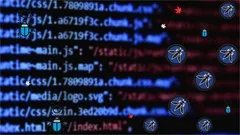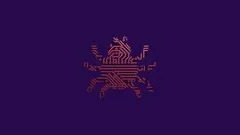
The Complete Practical Web Application Penetration Testing 
Discover the world of web application penetration testing with "The Complete Practical Web Application Penetration Testing" course. No prior knowledge of security testing or coding is required, making it accessible to all. This course offers practical labs and demonstrations to help you understand and identify web application vulnerabilities. With a downloadable PDF file for theoretical concepts, you'll learn by doing. By the end of the course, you'll have a solid understanding of web application penetration testing methodology and be able to conduct manual testing of vulnerabilities. Dive into the top 10 web application vulnerabilities, including SQL injection, broken access control, XSS, and more. Uncover the secrets of web application security and enhance your skills today. ▼
ADVERTISEMENT
Course Feature
![]() Cost:
Cost:
Paid
![]() Provider:
Provider:
Udemy
![]() Certificate:
Certificate:
Paid Certification
![]() Language:
Language:
English
![]() Start Date:
Start Date:
2022-01-14
Course Overview
❗The content presented here is sourced directly from Udemy platform. For comprehensive course details, including enrollment information, simply click on the 'Go to class' link on our website.
Updated in [September 27th, 2023]
What does this course tell?
(Please note that the following overview content is from the original platform)Welcome to this complete course about web application penetration testing The course doesnt require any prior knowledge of testing web applications for security vulnerabilities nor it requires any level of coding knowledge although its preferredThis course covers web application vulnerabilities in a practical fashion using practical labs designed for demonstrations The course contains a theoretical part to explain the concepts and a practical part for demonstration Course theoretical part is packed into a downloadable PDF file as wellYou will learn everything by doing and the course shows practical demonstrations on vulnerable systems designed for practicing your skills in web application penetration testingAt the end of this course learners should achieve the below objectives:· Understand Web application penetration testing methodology· Understand the concepts of web application vulnerabilities· Be able to conduct manual testing of web application vulnerabilitiesThe course is divided to cover 10 most common web application vulnerabilities covered in the OWASP top 10 list as of 20221- Injection vulnerabilities: Injection vulnerabilities are very common in todays websites In this section you will get to understand what causes an injection vulnerability and be able to uncover its existence by looking through and testing the right parts in any web application In injection vulnerabilities we cover the below categories· SQL Injection: Most common vulnerabilities against databases You will learn the different types of SQL injection vulnerabilities in addition to the ability to test and uncover a SQL injection by performing practical exercises against vulnerable pages· SQLmap: After you learned how to manually test for SQL injection here you will learn how to automate your testing using one of the most popular tools used in SQL injection· Command Injection: Command injections comes as one of the most dangerous web application vulnerabilities as it allows for complete takeover the system In this section you will learn how to spot a command injection vulnerability and how to perform a proof of concept2- Broken Access Control: This vulnerability also comes in the OWASP top 10 list as of 2022 We will cover to reveal weakness areas in a website that would allow unrestricted access to sensitive resources3- Broken Authentication: This section will teach you how to bypass authentication methods such as login forms4- JSON Web Tokens: JWTs are not considered as a web application vulnerability rather a kind of cookies used for authorization In this section we will go through the process of showing the mechanisms of testing and exploiting these tokens5- Sensitive Data Exposure: This section will reveal techniques that are used to see if a website has security measures against data leaks6- SSRF aka server side request forgery: One of the recently added vulnerabilities to the OWASP top 10 list You will learn how to use it make a website reveal sensitive resources and load internal running services7- SSTI aka server side template injection: not commonly talked about but this section explains how such vulnerability may lead to devastating outcomes such as command injection and full system takeover8- XSS aka Cross Site Scripting: Very well known and popular web application vulnerability In this section we will practically explain Stored Reflected and DOM-based XSS9- XXE aka XML External Entity Injection: a vulnerability that occurs as a result of poor XML implementation We will explain how XML works and see different techniques to exploit XXE10- CSRF aka Cross Site Request Forgery: Very popular vulnerability that when exploited allows for unauthenticated actions against users We will learn practically how to perform and setup a testing environment to uncover CSRF
We considered the value of this course from many aspects, and finally summarized it for you from two aspects: skills and knowledge, and the people who benefit from it:
(Please note that our content is optimized through artificial intelligence tools and carefully reviewed by our editorial staff.)
What skills and knowledge will you acquire during this course?
During this course, learners will acquire the following skills and knowledge:
1. Understanding Web application penetration testing methodology: Learners will gain a comprehensive understanding of the process and methodology involved in testing web applications for security vulnerabilities.
2. Understanding web application vulnerabilities: The course will cover the concepts and types of web application vulnerabilities, including injection vulnerabilities, broken access control, broken authentication, JSON Web Tokens (JWTs), sensitive data exposure, server-side request forgery (SSRF), server-side template injection (SSTI), cross-site scripting (XSS), XML external entity injection (XXE), and cross-site request forgery (CSRF).
3. Manual testing of web application vulnerabilities: Learners will learn how to manually test for and uncover web application vulnerabilities, such as SQL injection, command injection, bypassing authentication methods, testing and exploiting JWTs, checking for sensitive data exposure, exploiting SSRF, understanding SSTI and its potential consequences, practical explanations of XSS (stored, reflected, and DOM-based), exploiting XXE, and performing and setting up a testing environment for CSRF.
4. Practical demonstrations and exercises: The course will provide practical labs and demonstrations on vulnerable systems, allowing learners to practice their skills in web application penetration testing.
5. Automation using SQLmap: Learners will also learn how to automate their testing using SQLmap, one of the most popular tools for SQL injection.
By the end of the course, learners should have a solid understanding of web application penetration testing methodology, be able to identify and exploit various web application vulnerabilities, and conduct manual testing to uncover vulnerabilities.
Who will benefit from this course?
This course on web application penetration testing will benefit individuals interested in cybersecurity and specifically in the field of web application security. It is suitable for beginners who have no prior knowledge of testing web applications for security vulnerabilities.
Professionals in the following roles will benefit from this course:
1. Ethical Hackers/Penetration Testers: This course provides practical labs and demonstrations that allow ethical hackers and penetration testers to enhance their skills in identifying and exploiting web application vulnerabilities. They will learn the methodology and techniques required to conduct manual testing of web application vulnerabilities.
2. Web Developers: Web developers can benefit from this course by gaining a deeper understanding of common web application vulnerabilities. By learning how these vulnerabilities can be exploited, developers can implement better security measures and write more secure code to protect their web applications.
3. Security Analysts: Security analysts responsible for assessing the security posture of web applications will find this course valuable. It covers the OWASP top 10 list, which is a widely recognized standard for web application security. By understanding these vulnerabilities and their exploitation techniques, security analysts can effectively identify and mitigate risks in web applications.
4. IT Professionals: IT professionals involved in managing and securing web applications will benefit from this course. It provides insights into the various vulnerabilities that can exist in web applications and offers practical guidance on how to detect and address them. This knowledge will help IT professionals in implementing robust security measures and protecting their organization's web applications.
5. System Administrators: System administrators responsible for maintaining the security of web servers and applications will find this course useful. It covers vulnerabilities like command injection, server-side request forgery, and XML external entity injection, which can have severe consequences if not properly addressed. By understanding these vulnerabilities and their exploitation techniques, system administrators can take appropriate measures to secure their systems.
Course Syllabus
Introduction
Injection Vulnerabilities
Broken Authentication and Security Misconfigurations
Other Common Web Application Vulnerabilities
Course Provider

Provider Udemy's Stats at AZClass
Discussion and Reviews
0.0 (Based on 0 reviews)
Explore Similar Online Courses

Creating a Cartoon Octopus Monster in Maya 2020

Google Calendar Basics

Python for Informatics: Exploring Information

Social Network Analysis

Introduction to Systematic Review and Meta-Analysis

The Analytics Edge

DCO042 - Python For Informatics

Causal Diagrams: Draw Your Assumptions Before Your Conclusions

Whole genome sequencing of bacterial genomes - tools and applications

Clojure Basics

Certified Secure Web Application Engineer (CSWAE)


Start your review of The Complete Practical Web Application Penetration Testing